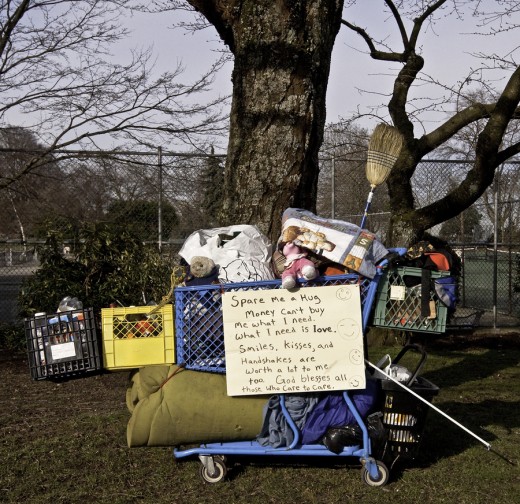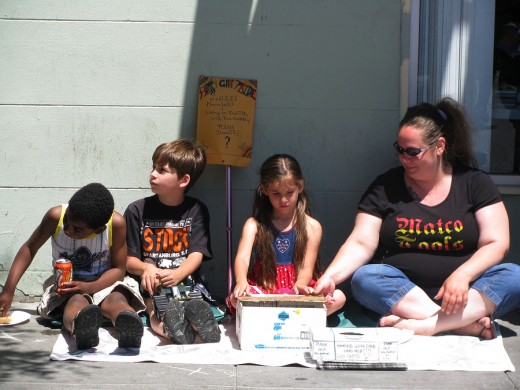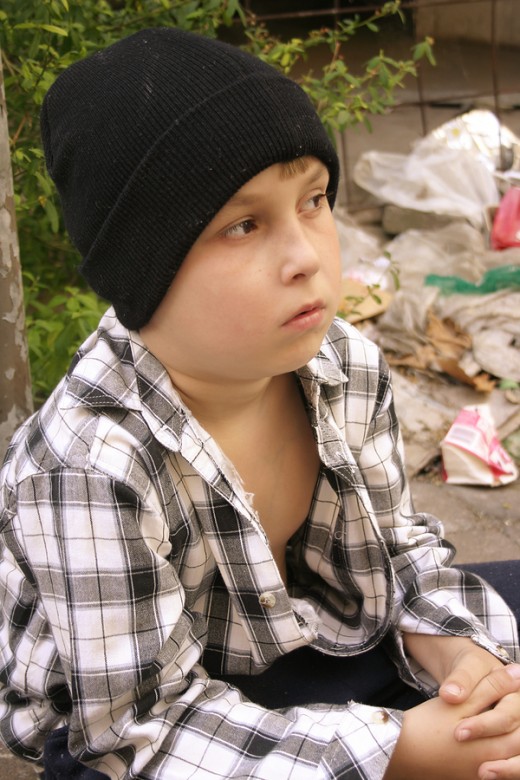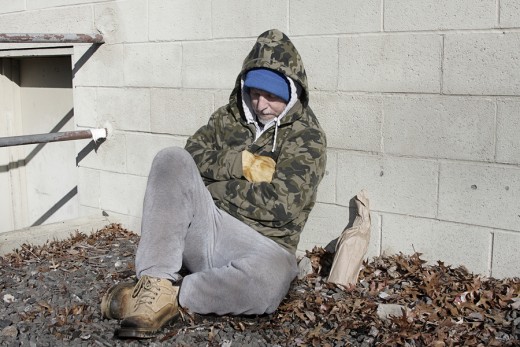Of Mice and Men -- does Sarasota know the difference?

No one wants mice in their homes.
The thought is disgusting; they’re so dirty. The idea of them infesting our space -- living in the walls, chewing into our food and spoiling it, having their pink, naked, grotesque litters of young anywhere and everywhere, leaving behind all those seed like droppings in our drawers and cupboards, urinating in our air vents, perfuming the whole house with that ‘mousy’ smell – is enough to turn our stomachs.
They carry disease and parasites.
Their darting little shadows give us the creeps.
The skittering, scratching sound of them behind the walls and in the ceilings robs us of sleep at night.
They are vermin. They are not to be tolerated. We must rid ourselves of their presence by any means possible.
So we set out traps baited with peanut butter, and catch one or two. We sprinkle warfarin pellets under the sink, and around the garbage areas, and soon ask ourselves, “What is that smell?” as their little dead bodies rot in places we can’t reach. It’s an ongoing war, and as quickly as we can kill them, they reproduce twice as fast.
That’s the thing about mice; see one and you know there are a hundred more you haven’t seen.
Oh, what to do?
Enter the supersonic mouse repeller.
This gizmo promises to rid our personal space of these pests by means of ultra-high frequency sound waves, so unpleasant to the mouse population that they’ll pack up and leave.
Here is a clipping from the ad-copy for the thing:
“The Ultrasonic Rodent Repeller, broadcasts a highly complex intense sound in the ultrasonic range. The intensity for a rodent is analogous to a jackhammer next to our ears. The intense sound creates stress for the rodent. In the animal kingdom, a stressed rodent is vulnerable. Avoiding stressful environments increases the chance for survival and is within the rodent's biological survival strategy. The Rodent Repeller creates a hostile environment so rodents naturally will try to avoid it and avoid taking up residency and nesting in the space.”
The City of Sarasota, Florida thinks this is a good idea
In a news story broadcast on the local SNN, an all news station, the City of Sarasota announces a plan to broadcast opera music into the public parks to discourage the homeless from congregating there.
Is this not a brilliant plan?
After all, if sound waves can deter mice from taking up residence in our nice, clean houses, does it not stand to reason the same theory will apply to those humans we’d rather not see? Certainly, many of us feel the same way toward the homeless.
The thought of sharing our beautiful parks with them is disgusting; they’re so dirty.
They pee in the bushes and leave their droppings behind.
Their flotsam of personal possessions is unsightly.
They go through the garbage looking for edibles, or recyclables.
They pester us with requests for loose change.
Surely, they carry disease. They must. After all, it’s a sure bet they have no access to medical insurance and care. Even the hospitals don’t want to see them, and when they do, they rid themselves of them at the first available opportunity.
The sight of them, sleeping on the benches, whiling away the hours of their empty days out in the fresh air and sunshine gives us the creeps.
They are all drug addicts or the insane, and not to be tolerated. They have no right to spend time in these beautiful public places and must be driven back to the dark and hidden corners where they belong. After all, what would the tourists think?
Are they not to blame for their own plight? They must be. This is the land of rugged self-sufficiency, where everyone has an equal opportunity to pursue success, riches and acclaim. Anyone who does not is lazy, incompetent or undeserving. Certainly not my problem, we think. And definitely, we don’t want to look at them.
So let’s use sound waves to drive them away from the pleasant places of our cities. It works on mice, doesn’t it?
One in every one-hundred Americans will experience homelessness this year
Not I, we say, and many of us believe it. We must believe it, for surely, the thought of joining the shadow world of the homeless will rob us of sleep, and we will toss and turn in our comfortable beds, gripped in a nightmarish scene: in need, unnoticed, spurned, treated as vermin, driven from place to place by the playing of opera music. What hell that will be!
Well, it could happen. Statistically speaking, one per cent of us will face homelessness this year. Let’s see, there are 307,973,000 people living in the United States according to the U.S. Population Clock’s estimate for October of 2009. That will mean 3,079,730 homeless by the end of the year. Chances are, at least one of you reading this article will face the nightmare.
Considering that existing shelters and help programs will cover only 23% of this number, leaving the rest to the tender mercies of the street, you’d better develop a taste for opera.
Who are the homeless?

Accurate statistics on homelessness are difficult, if not impossible to ascertain. Those figures available are from shelters, where head counts and surveys are possible, and as only an estimated 20-30% of the homeless are in shelters, the rest is pure guess work. Here are the best figures to be found:
In general:
The homeless population is about 50 % African-American, 35% White, 12% Hispanic, 2% Native American and 1% Asian.
Children under 18 make up 39% of the homeless population; People between the ages of 30 and 50 makeup 51% of the homeless population; people between the ages of 55and 60 account for 2.5%
Single adults who are homeless are most likely to be men -- 45%; single women make up 14%
Families with children are now the fastest growing group of the homeless population, they account for about 40% of the people who become homeless each year. 38% of the people already homeless are families with children.
Families 41% of the homeless

Families constitute around 41 percent of America's homeless.
65% of these families are headed by females and of those, 50 percent report fleeing domestic abuse. Most battered women and children have nowhere to go, so they reside in the streets. There are not enough shelters for homeless families in general, nor room for all the victims of domestic violence in those specialized shelters. There are waiting lists but they are much too long, and people are difficult to contact when there is space if they live in the street.
The main cause of these homeless families is the lack of affordable housing.
Homelessness among families upsets nearly every part of the family’s life. It disrupts children’s education and development. It also affects much of the emotional and physical health of the family. A family’s homelessness often causes the members to separate.
They are the fastest growing segment of the homeless population.
Children - 39% of the homeless

Children under the age of 18, represent 39 percent of the homeless. 42% of these children are under five years of age. Imagine yourself as one of these children, at best, living in a shelter, at worst, living on the street.
Many teachers, at schools in places with a high rate of homeless, are used to seeing children falling asleep at their desks. These children may not be able to sleep because they are in a room with seven or eight people, and some could be infants. They may have woken up to a baby screaming at four a.m. in the morning. In the cafeteria, when the kids eat like they’re starving, or ask for seconds and thirds, maybe it’s because they didn’t eat dinner last night -- or maybe they didn’t eat all day. They live with the constant threat of violence, and in fear of losing what little possessions they own, including books, to theft.
These children could be in their third or fourth school that year. They suffer from chronic fatigue, malnourishment, nervous disorder and the stigma of being a ‘homeless kid.’
Veterans 23-40% of all homeless

Veterans comprise between 23 to 40 percent. 40% of all homeless men have served in the armed forces. Comparative statistics are not available for the female population.
According to one study, 47% of these veterans served in the Vietnam war, and many are double counted in these statistics, included again in the group with mental health issues. One study shows that veterans who served later, though they did not witness the same degree of combat or go without treatment for PTSD; they are highly represented in the homeless rates. This is attributed, in that study, to modern day recruiting techniques, which target the lower economic strata of the population.
The elderly

The elderly made up 6 percent. However, this is expected to increase as 43% of the elderly live at or close to the poverty level. In the next decade we will witness the after effects of today’s financial disaster. Those now approaching their retirement years will do so with fewer resources than the previous two generations.
Most of the elderly living in America
today are dependent on pension and social security checks. Neither of
these are able to provide a very comfortable lifestyle, never mind a luxurious
one. Although most of the elderly have some source of income and a roof
over their head, nearly 4 million do not. Many live with children or grandchildren, or other relatives. Many live in substandard housing, with detrimental effects to their health.
For elderly people actually facing the streets, shelters are not a suitable solution. This is because shelters are designed to provide short term accommodations, in hopes that job training programs and other forms of assistance will help people move up and out of their homeless situation.
Most of the old, homeless people in America are overlooked by the American public. The elderly homeless population is often held responsible for their homelessness.
The mentally ill -- between 16 and 26% of the homeless

The mentally ill, contrary to popular myth, according to the National Coalition for the Homeless, comprise only 16 percent of the total homeless. Another study suggests 26 percent.
Without access to affordable health care or a fixed address, they can’t get treatment, which automatically precludes finding or keeping a job. Most of the mentally ill homeless can live on their own with community based treatment services. These people are willing to get help, but not enough of these programs exist. Without treatment, their conditions deteriorate. They are also among the most vulnerable to predators out on the street.
Those with substance abuse problems -- anywhere from 30 to 65% of the homeless

Those with substance abuse problems make up 63 per cent of the homeless population, according to one study of those in shelters, However, it is not known how homelessness has affected that ratio – one study suggests substance abuse declined with homelessness; another states that 38% self-medicate in order to deal with the stress of homelessness. The authors of the first study expressed surprise that substance abuse might decline with homelessness, and wondered why that may be. Apparently, it doesn’t occur to them that substances are difficult to obtain without money.
Others report a greater dependence on alcohol following homelessness.
The homeless of Sarasota
Here are some statistics for Sarasota county, and please note, these only reflect those homeless who applied for and received assistance in 2008:
"Over 18,000 people were served by our homeless service providers in 2008.
This is a slight decrease from 2007, primarily due to decreases in funding * (emphasis the author’s. Note: those in need did not decline – only the number the agency could afford to help).
Of the clients served, 18% or 3,482 were children."
Here is one day:
498 Children... 1,381 family members… 150 Seniors… 192 Veterans… received supportive services in Sarasota county.

Conclusion
There is no reason to believe the homeless population of Sarasota differs greatly from the national average, so the breakdown given here can also be assumed to be the population Sarasota intends to harass from the parks with this dubious campaign – mostly families with children who can’t afford to pay rent, veterans who have served their nation and been abandoned in return, those with mental health issues and yes, one or two winos and junkies.
They are not welcome to enjoy the sun and fresh air of Sarasota's parks
Has it not occurred to honored city counselors, there is nothing different about the homeless to ensure they are the only ones driven to seek shelter from non-stop opera music? What about those tax-paying citizens? Apparently, city officials believe that ownership of homes automatically elevates one to an appreciation of the opera. They will enjoy. The homeless will flee.
Uh-huh.
Oh, by the way – that ultrasonic mouse repeller? Well, studies show that it doesn’t work, though it does appear to drive cats up the wall. It seems the mice grow used to the sound and ignore it.
One ad copy I saw countered this claim with the following instructions:
“The ultra-sonic rodent repeller is not designed to work alone. Rodenticides and traps should be used in conjunction. The device can then be used to herd rodents into that area so equipped.”
Let’s hope the city counsel of Sarasota doesn’t read this one. It may give them ideas.
For more information on the situation of the homeless in Sarasota, please go to my hub --
Meet Marta and Chuck -- without a home on the meanest streets in the U.S. -- an interview





